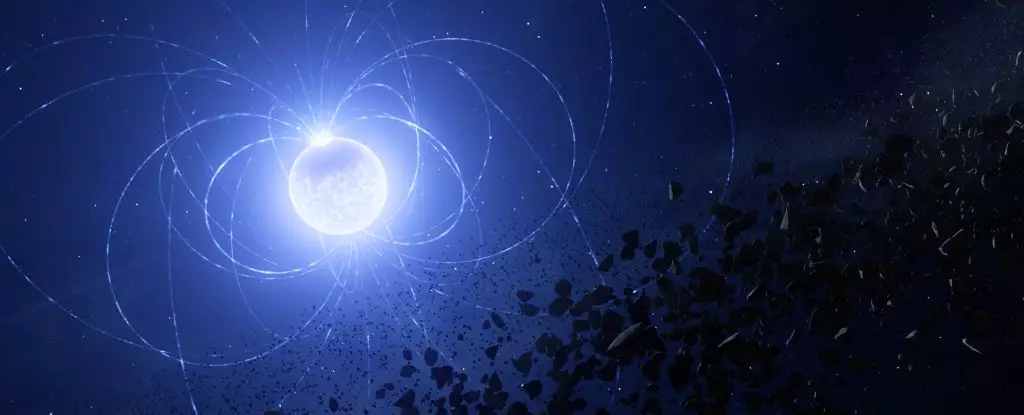In a recent discovery made by a team of astronomers, a white dwarf star has been found guilty of consuming one of its own planets. The evidence? A scar of vaporized metal marring the surface of the star – a clear indication of the planet that met its demise by being swallowed by the star. What sets this case apart is the fact that the material left behind by the planet was not spread out across the star’s surface, but rather localized to a specific area. This finding sheds light on the process by which white dwarf stars devour the planets that once orbited them in peaceful harmony.
White dwarf stars are the remnants of stars like our Sun, once they have burned through all their fuel and gone through the final stages of their lifecycle. They shrink down into dense objects, around the size of Earth but containing up to 1.4 times the mass of the Sun. These stellar remnants are incredibly hot and continue to emit light for trillions of years. Despite their violent death throes, some planets have been found to continue orbiting white dwarf stars, showing their resilience. However, evidence of planetary material in the atmospheres of white dwarfs also points to the fact that not all planets escape unscathed.
One particular white dwarf star named WD 0816-310 has caught the attention of astronomers due to its peculiar characteristics. Previous observations revealed the presence of various metallic elements in the star’s atmosphere, suggesting recent planetary consumption. Further analysis confirmed that these metals originated from a planetary fragment as large as, or possibly larger than, Vesta – the second-largest asteroid in the Solar System. What intrigued researchers the most was the fact that the strength of the metallic signal varied with the star’s rotation, indicating a localized concentration of planetary material.
The team of astronomers discovered a crucial piece of the puzzle – the star’s magnetic field played a key role in keeping the vaporized metallic elements confined to a specific area on the surface of the white dwarf. The changes in the strength of the signal were directly linked to fluctuations in the star’s magnetic field, suggesting a correlation between the two. This finding challenges existing theories about the dispersion of planetary material on white dwarf stars and opens up new avenues for research.
The discovery of a concentrated patch of planetary material on a white dwarf star raises intriguing questions about the role of magnetic fields in shaping the fate of planetary remnants. By taking multiple observations over time, researchers were able to uncover patterns that would have been missed with a single snapshot. This finding suggests that similar surprises may await in other polluted white dwarfs that have been observed over the years. Perhaps a fresh look at these stars could reveal even more secrets about the cosmic events that unfold in the aftermath of a star’s death.
The case of the devouring star serves as a reminder of the complex interplay between stars and their planetary companions. The discovery of a scar of vaporized metal on a white dwarf star points to the intricate mechanisms at work in the universe, waiting to be unraveled by inquisitive minds. This cosmic detective story is far from over, and future observations of white dwarf stars may hold even more surprises.



Leave a Reply